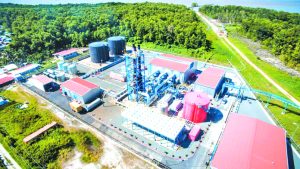This article was added by the user . TheWorldNews is not responsible for the content of the platform.
…announces temporary measures to address spate of electricity woes
The issue of power outages across the country is one that has attracted much attention and criticism of the Guyana Power and Light (GPL). It has also attracted the announcement of “temporary measures” by President Dr Irfaan Ali, including an extra charge of US?10 per kilowatt for the commercial consumers using up the most power during peak hours.
 President Dr Irfaan Ali
President Dr Irfaan Ali In a live broadcast on Saturday, President Ali announced that the Government will be taking these steps to ensure power supply can be better regulated during peak hours. The increased rates for large power consumers will go hand in hand with a request to have them stay off the grid during peak hours.
President Ali explained that the previous steps his Government had taken to bring down the cost of electricity for all consumers, including removing the excise tax on fuel, had the unintended effect of causing large consumers of electricity who were self-generating previously, to return to the grid. This has in turn strained GPL’s capacity. The Government wants them to return to self-generation.
“In order to come up with a temporary solution… we want to encourage the high-volume consumers to go back on self-generation between 1 pm to 3 pm and 6 pm to 10 pm so that we would not have the outages to residential communities and residents across the country. When we look at it, if we have maybe 15 to 20 of the large consumers self-generating during this period, that would give us back that room that would avoid the outages that we have right now.”
“But if they stay on the grid during this period – that is 1 to 3 pm and 6 to 10 pm as a temporary measure, we would have an additional cost of 10 cents per kilowatt hour. So they can go back without absorbing this additional cost by self-generating because they have [already] built up the capacity for that… This is a temporary measure until we get this close to 30 megawatts of new power coming in at mid-December and then this temporary measure would be withdrawn so that everyone can come back on the grid [full time],” President Ali said.
The President acknowledged the concerns of the citizens and made it clear that even the Government is dissatisfied with the current situation of power outages. He explained that Guyana is so far behind when it comes to power generation, after the A Partnership for National Unity/Alliance For Change’s (APNU/AFC) years between 2015 and 2020, that they would have to double their capacity to produce energy.
“As you know, we have been experiencing power outages. Prolonged power outages. That we are totally dissatisfied with. However, it is very important that we understand the prevailing conditions through which the Guyana Power and Light is operating.”
“We have a situation in the country where we’re trying to catch up on five years of neglect and not investing in the maintenance of the system or expanding the system, and at the same time building additional capacity to take care of the demand,” Ali said.
He explained that GPL was in total collapse when they entered office, with the Government in $13 billion in arrears to GPL. Additionally, the capital programme was in disarray. He also noted the loss Guyana suffered from Amaila Falls Hydropower Project (AFHP) not being operationalised, which would have resulted in Guyanese paying US?10 a kilowatt per hour. Now, Guyanese are paying US?22 per kilowatt.
It was only Friday that GPL announced it had recorded its highest-ever electricity generation and demand in the Demerara-Berbice Interconnected System (DBIS), leading the utility company to encourage consumers to practice electricity conservation.
The company recorded a peak demand of 182 Megawatts (MW) compared to 154 MW for the corresponding period last year. This notable increase in electricity generation and consumption can be attributed to the increasingly high temperatures over the past few months and growth in the housing and commercial sectors, the utility company deduced. (G3)







